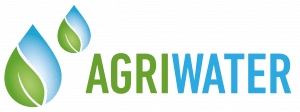Agriculture plays a crucial role in people’s lives. It is vital to all humans no matter the nationality, race, gender, ethnicity, religion and so on. Even though people depend on agriculture to survive, they often forget that in order to provide sufficient crop and animal production, we need to make sure that our ways of farming are sustainable and enable us to farm in the long-term future. In the same spirit, people have to make sure to adapt to climate changes in order to keep the quality and number of production.
The current research proves the climate changes which we currently experience, especially droughts. WWF states that in Europe, longer and more intense periods of droughts and periods without precipitation are more and more often every year causing prolonged shortages in the water supply. Such shortages then result in drying of crops, reduce soil quality, bring new pests, rodents and diseases and moreover, they create shortages of water for farm animals like cattle.
The negative consequences are serious but one may ask: is that even possible to adapt to such drastic changes like lack of water? Yes, it is. However, the adaptation process needs preparations, one has to consider his or her possibilities, close environment, soil characteristics, legal options and context. To help farmers and landowners start, implement and sustainably maintain new water systems or other adaptation ways to droughts on one’s farm, this project is proposed.
The project AGRIWATER aims to educate farmers, landowners as well as other stakeholders in possible ways how to adapt on climate change and droughts innovatively and sustainably and how to establish, implement and take care of water systems on agricultural land as an effective way of reducing consequences of droughts. The idea of implementing new water systems supports the long-term sustainable solutions and continuous processes of adaptation on climate change.
The main goal of the project is to help farmers maintain their agricultural lands by implementing innovative adaptation measures to droughts. Similarly, the project aims at landowners in order to raise awareness amongst them why it is necessary to take care of their lands and not just rent it recklessly. The project is, thus, divided into 5 main outputs which are:
- The Current Situation Summary Report.
- The Collection of Best Practices Examples.
- The Innovative Educational Materials.
- The Awareness Raising Publication and finally.
- The Web-based Educational Platform.
By delivering these outputs we aim to create a comprehensive educational system for a broad audience focusing on a topic which is, in an area of life-long education, still rather neglected.
